Cologne was once a center of Dadaism and later on of
electronic music.
Still the town sees itself in the tradition as a place for cultural
experiments. Not all are happy with this.
The 'Museum Ludwig'[1] is only one among the eight state
owned and eight
private museums in Cologne, however it accounts for about half the
visitors. Obviously, its excellent location, namely next to the Cathedral
as well as to the main railway station is an advantage. Yet, if not its
architecture as a stylized factory, the gate of flickering monitors near
the entrance gives a clear indication what the museum is about. Some of the
things inside available to visual examination are doubtlessly what Germans
call in their mystic language 'Publikumsmagnet', which translates into
sober English as 'crowd puller'. Samples of the rugged creativeness of
Picasso, Russian constructivist paintings or the more recent colourful
Pop-Art are sending up an aura of importance and history. Others, in
contrast, may not make every tourist feel proud of having been confronted
with. Germany's most known and controversial artist, Joseph Beuys, is
generally supposed to have claimed, that 'everything is art'[2] (while
sceptics will continue to add the condition 'if it is in a museum of art').
For example, in the neighbourhood of famous paintings,
you'll see a single
Pfennig exibited in an over-sized glass box in the center of a room.
Nostalgics of the former D-Mark are certainly excited to review a central
element of their past, whereas the owner, P. Sliwinski (living in Hamburg)
doesn't care about national grievances and merely gives the explanation
that it happens to be his private 'lucky penny' (a quiete common possession
among Germans) and mentions date and place where it was found.
Another German artist, H.P.Feldmann, who pinned hundreds
of photographs on
the museum walls, placed into one of the smaller rooms nothing else then a
lonely und somewhat untidy bed. Is it meant for bored guards? Or does the
artist himself sleep in his exhibition? No sign helps, but the catalogue
(sic!) gives a clue: it should create an 'intimate atmosphere'!
Ilya Kabakov, on the other side, invites one to have
a look at the
'not-hanged' picture ('niepoveshennaya kartina'). One enters the room of a
small countryside museum and finds a folding ladder at the side and some
tools on the floor. Instead of paintings, short comments from imaginary
visitors are printed on the wall. Either knowing Russian or getting the
translation sheet outside, one learns that those persons mostly complain
about the bad illumination, other people's clothes and the poor
implementation of the paintings. The opinion about art is ranging from
'This total installation has indeed an effect. A very repressive one.' to
'I understand that here is nothing. Art gives you from its own ever new
thoughts!'
Considering that the characteristic of Modern Art is
to explore frontiers,
one is spurred to think what might be a consequent next logical step of
minimalisation. Maybe an entire empty museum? Yet this already happened in
Cologne!
Some time ago, the couple Ludwig, like many other patrons
in Germany[3],
felt a certain unease with the fact that they had to share 'their' museum
(and the museum's name) with others. So they offered to the town a
sufficient amount of pieces of art to provoke the necessity to build
another museum. The new building, the 'Wallraf-Richartz-Museum'[4], was
erected after plans of the local architect O. M. Ungers, known for his love
of simple cubes by his 'Gallery of Contempory Art' in Hamburg. Before the
collections of Medieval and Early Modern Art could find shelter there, it
was opened in november 2000 for one day to the public. And the public came
in such masses that one had to wait half an hour at the entrance to get
inside and afterwords moving in snail pace to examinate the naked walls of
a windowless building and the identical ground plan of each floor!
Given this, could there be still more respectively less? Of course, it can!
After that success, the Town Gallery ('Kunsthalle'),
an ugly yet
established building from the sixties, was knocked down in 2002 in order to
be replaced by a magnificent new complex, gathering an exhibition hall, an
ethnological museum, a public art library and several services together.
Unfortunately, German economy didn't perform well in the last time and it
turned out that there is no money left for cultural ambitious plans. This
opened the opportunity for tourists to visit in the very commercial heart
of the town a whole 'not-built museum'[5]! In fact, the town council has
decided in july to really want to build something, may it be smaller then
favoured, still construction works won't start before spring 2004.
Meanwhile a cultural initiative arose, calling itself 'the hole'[6]. Its
aims are among others to 'support the planning and elaboration of
intelligent concepts in the frame of cultural development in Cologne' and
'the celebration of and homage to The Hole'!
With contempory art as an intrinsic part of everyday-live in Cologne, it
seems more then justified, that the town has recently decided to apply for
the title 'European Cultural City' in the year 2010!
[1] http://www.museenkoeln.de/ludwig
[2] the correct quote is 'everybody is an artist'; http://www.beuys.de
[3] "Die offentliche Hand darf sich nicht erpressbar machen" Art
-Magazin
10/03
[4] http://www.museenkoeln.de/wrm
[5] http://hometown.aol.de/cavadur/page6.html
[6] http://www.haubrich-forum.net/good_time/_good_time_dok/loch_ev/satzung.pdf
Alexander Klassmann
|
|
|
||||||||||||||||||||||
|
|
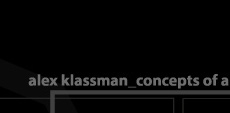 |
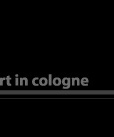 |
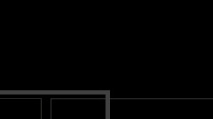 |
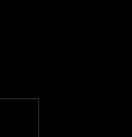 |
|
||||||||||||||||||
|
|
 |
 |
|
||||||||||||||||||||
|
|
|
|
|||||||||||||||||||||
|
|
|
||||||||||||||||||||||
 |
 |
 |
 |
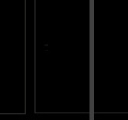 |
 |
|
|
||||||||||||||||
 |
|
||||||||||||||||||||||
|
|
|
||||||||||||||||||||||
 |
|
||||||||||||||||||||||
|
|
|
|
 |
 |
|
||||||||||||||||||
 |
|
|
|
||||||||||||||||||||
|
|
|
||||||||||||||||||||||
| |
|
||||||||||||||||||||||
|
|
 |
|
|||||||||||||||||||||
 |
|
||||||||||||||||||||||
|
|
 |
|
|
||||||||||||||||||||
 |
 |
|
|
||||||||||||||||||||
|
|
|
|
|||||||||||||||||||||
|
|
|
|
|
|
|
|
|
|
|
|
|
|
|
|
|
|
|
|
|
|
|
|
|